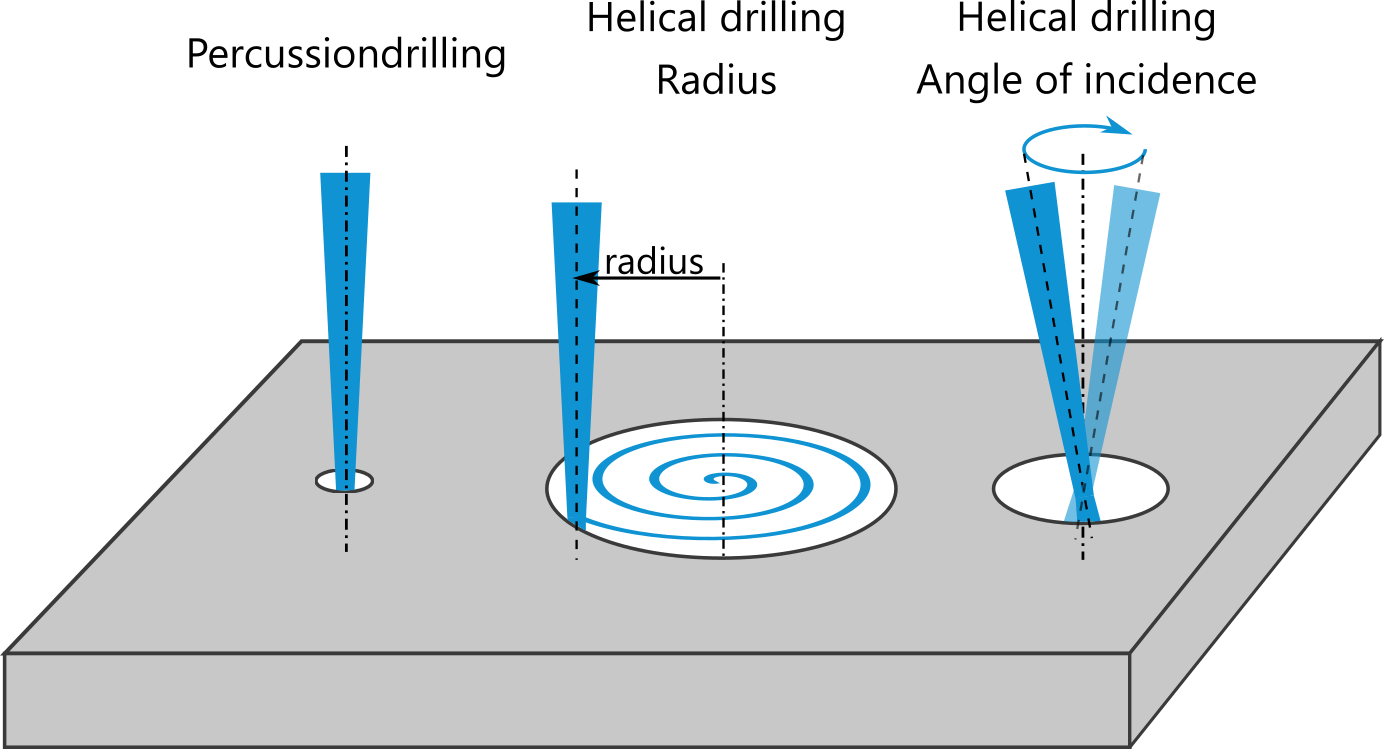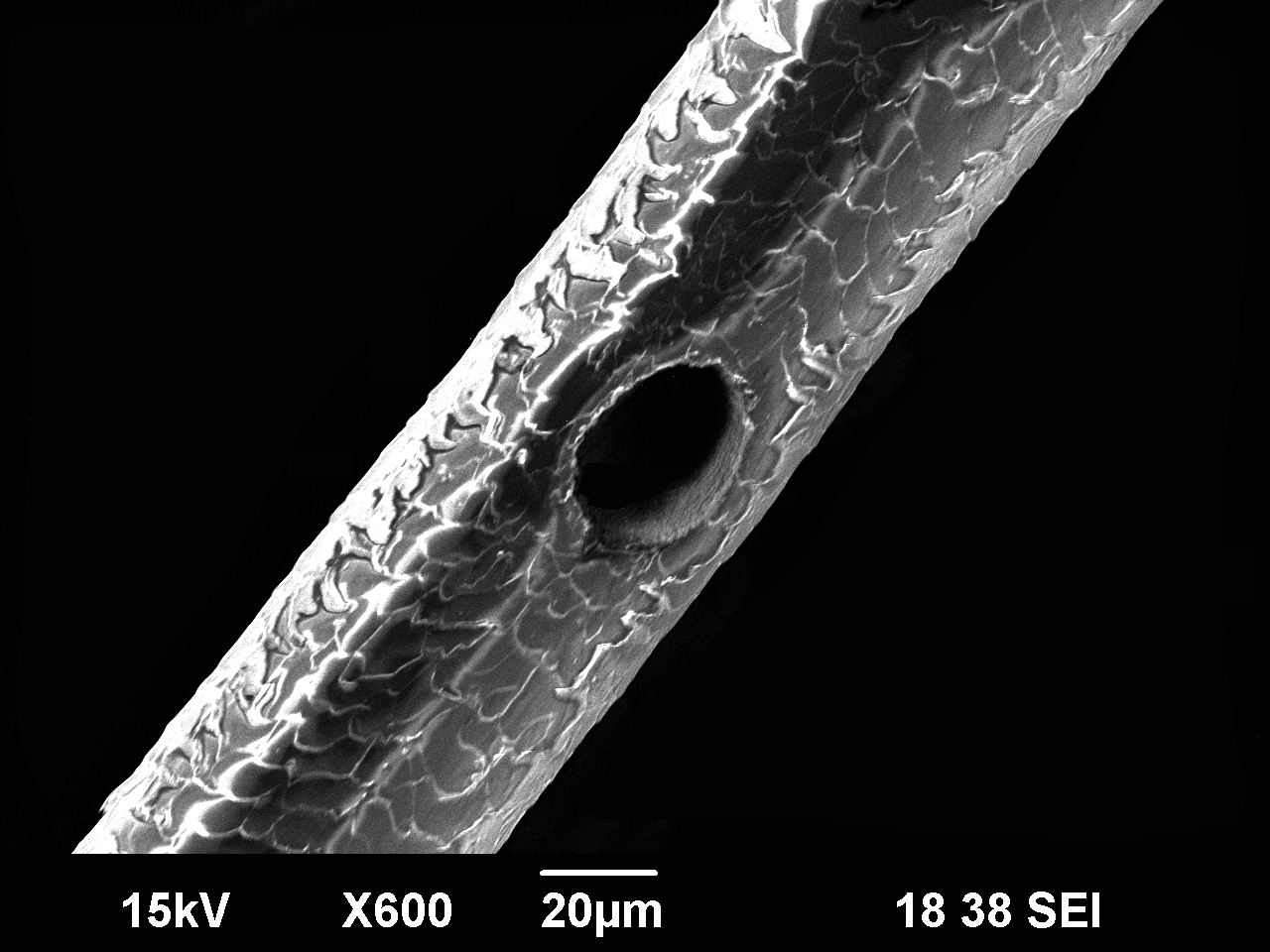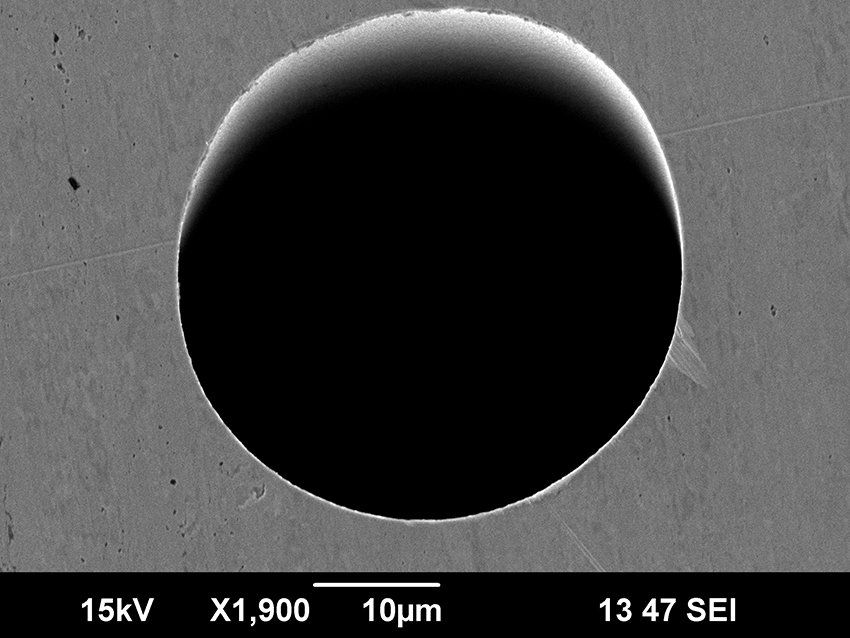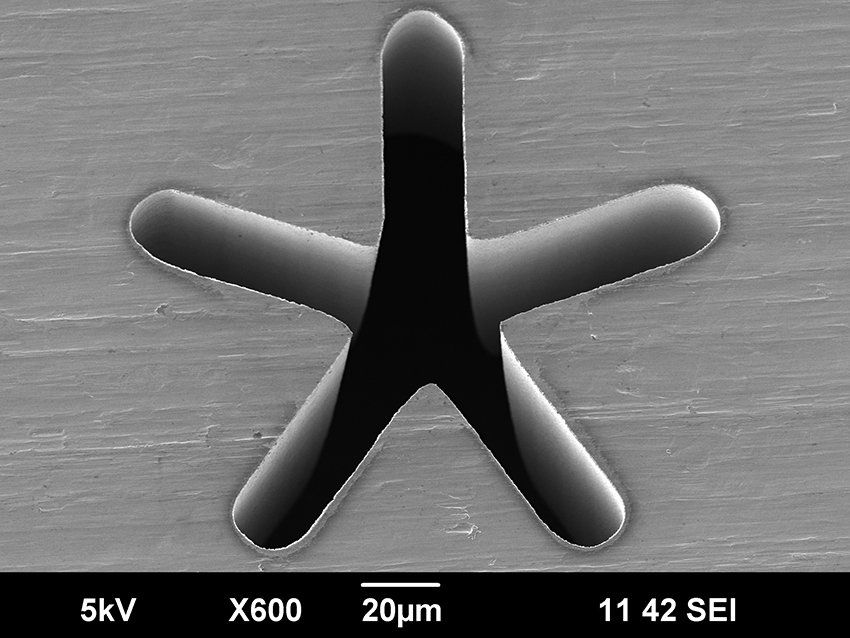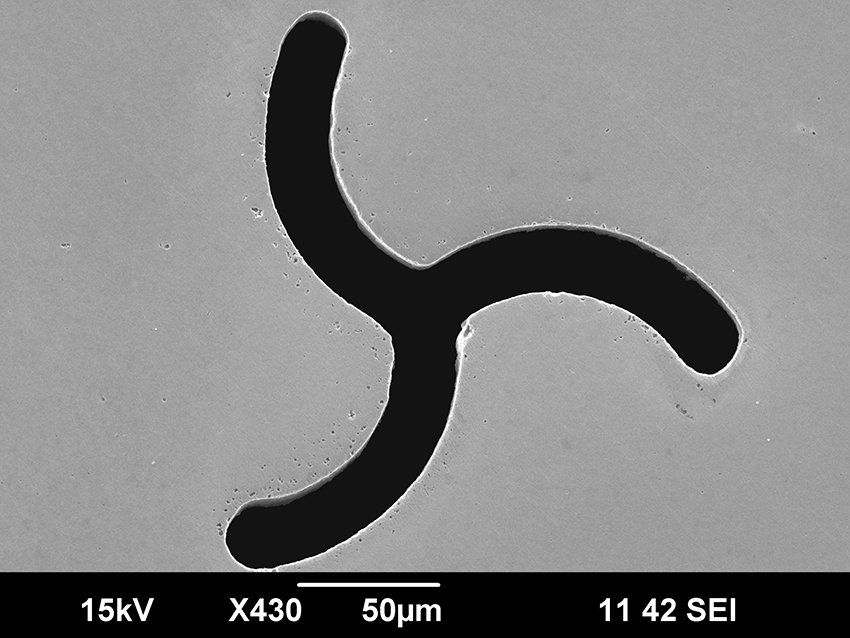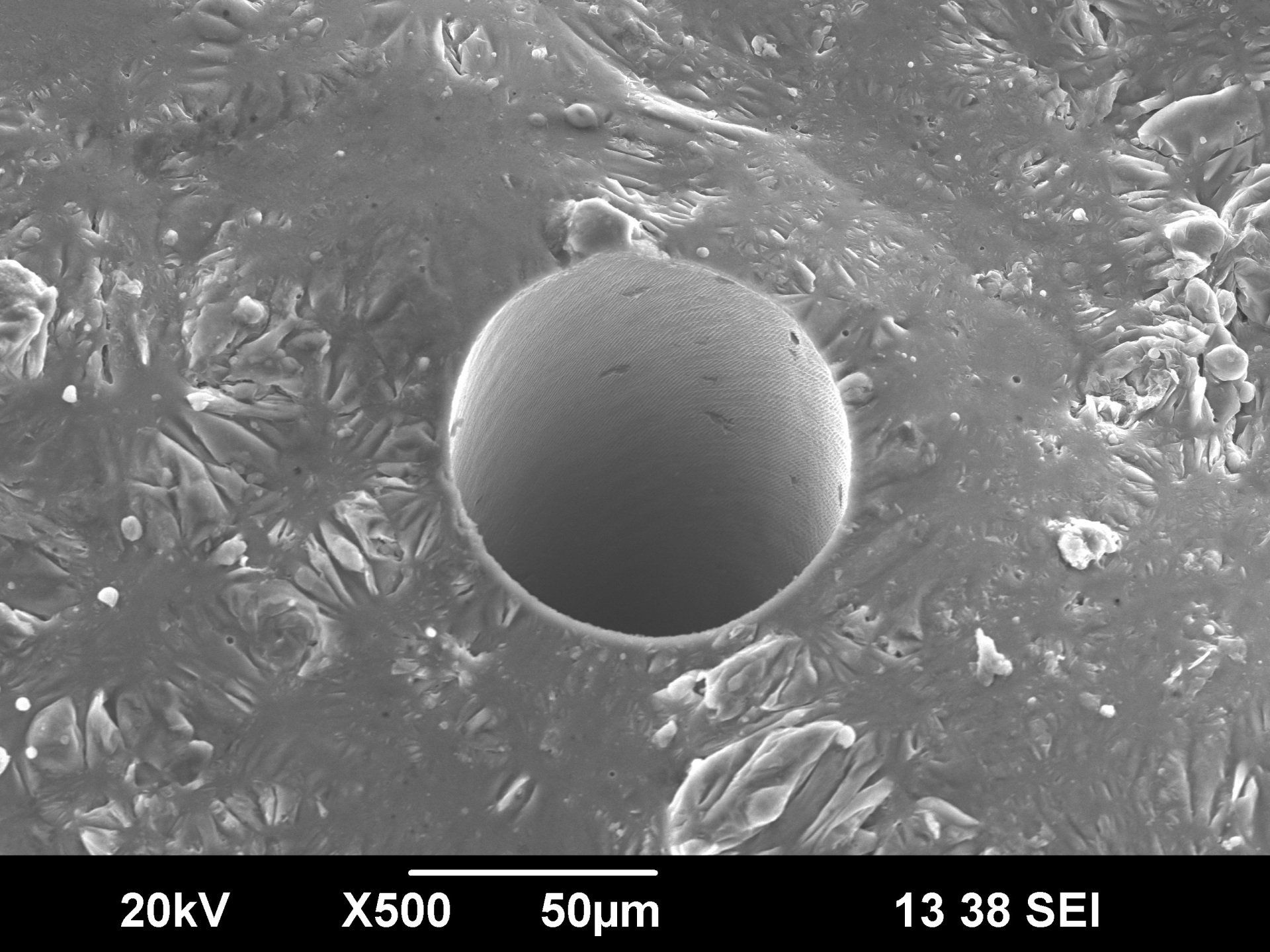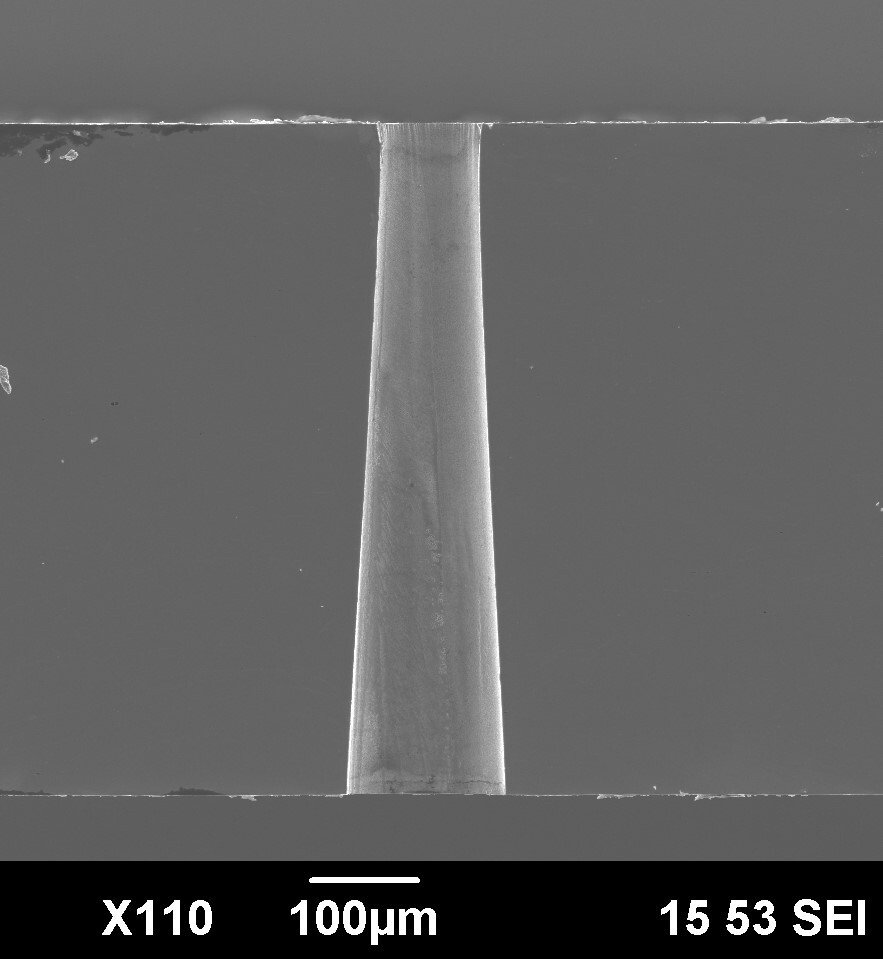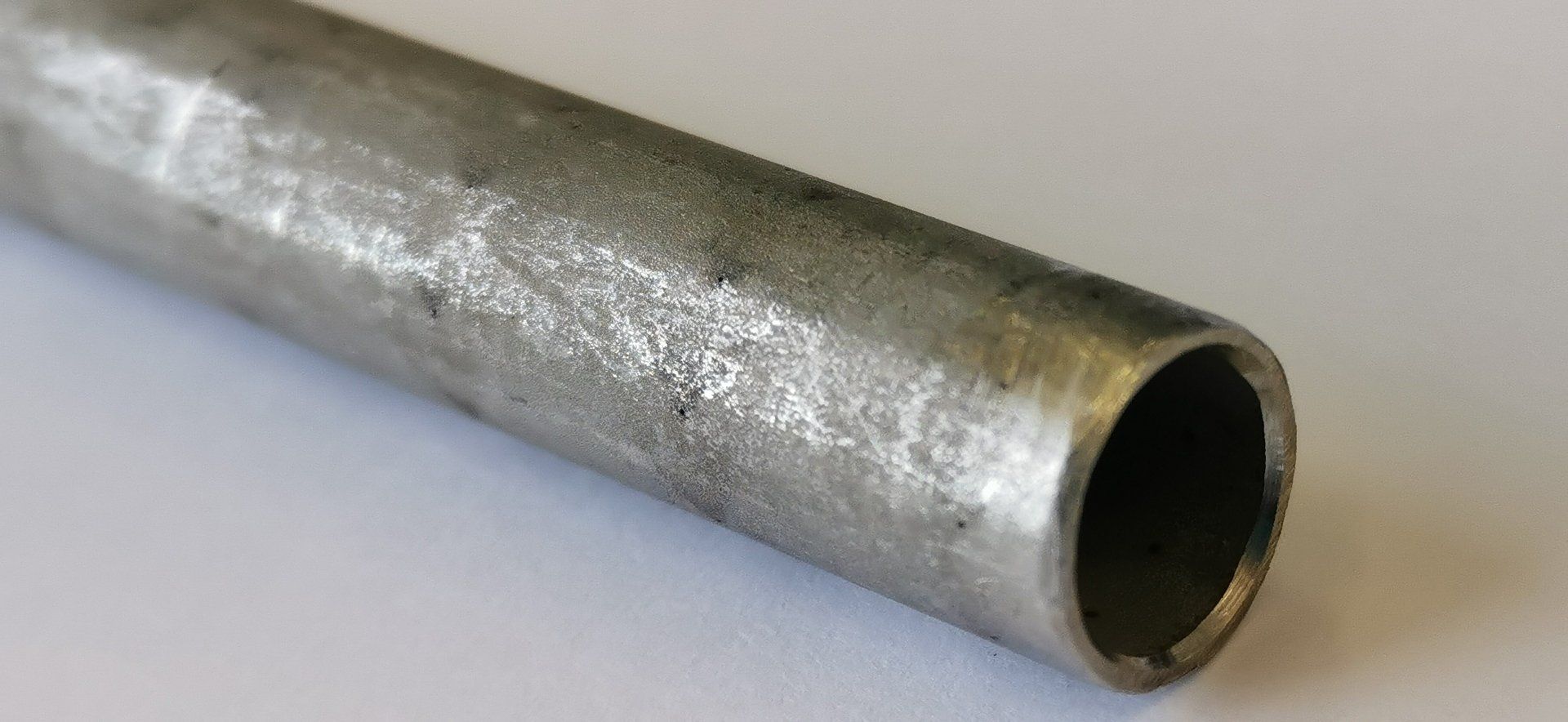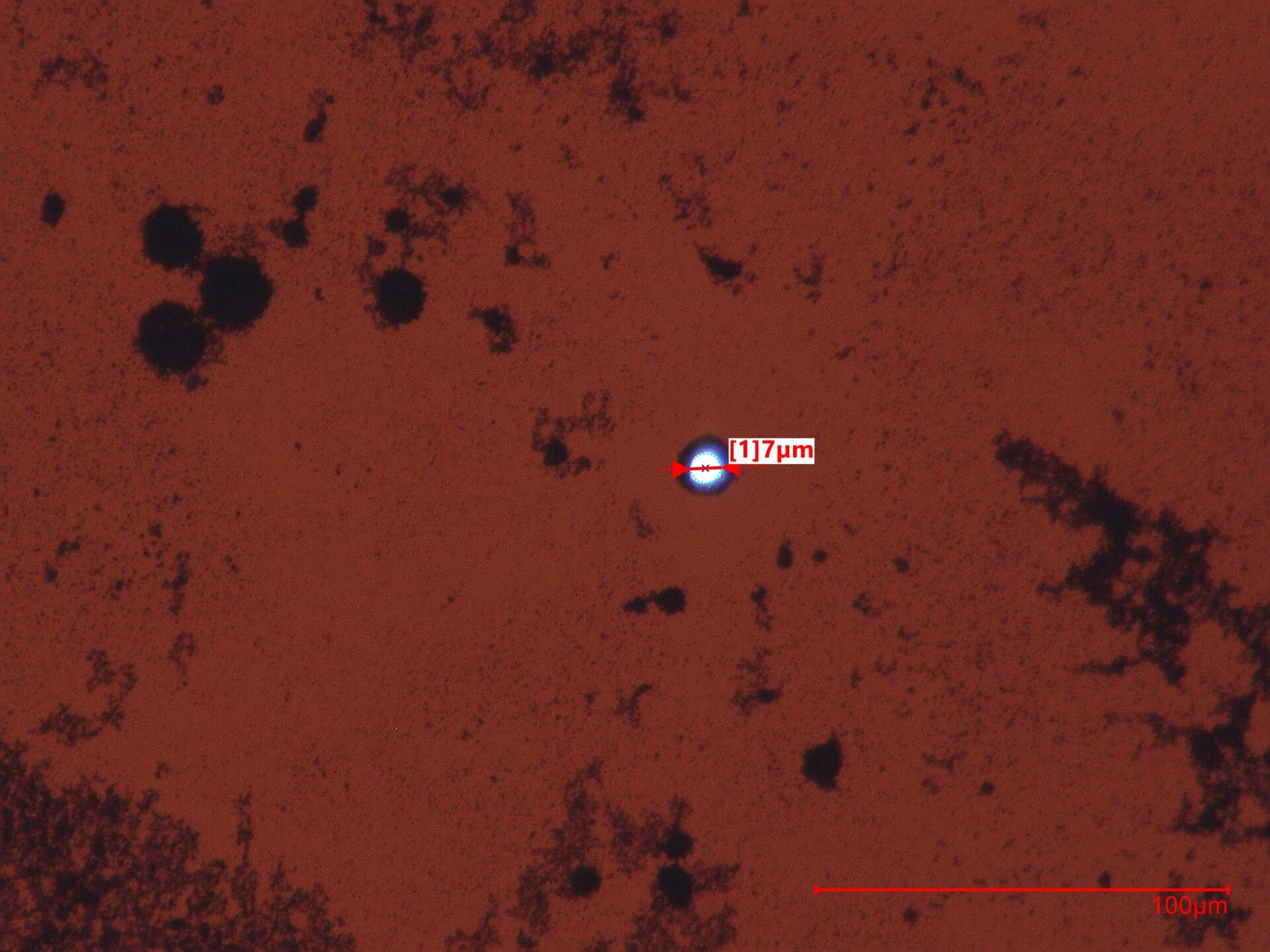Microdrilling
Precision and freedom of design thanks to laser radiation
Drilling with the ultrashort pulse laser
The ultrashort pulse laser as a high-precision and flexible tool allows the drilling of the smallest holes in any material with great freedom in the geometry of the hole. Thanks to the ultrashort pulse laser, there are virtually no limits to creativity in the design of the hole shape. Completely new applications become possible in this way.
The advantages of drilling with the ultrashort pulse laser are:
Smallest hole diameters down to 20 µm
are possible thanks to the good focusability of the laser beam.
Aspect ratio (depth / diameter) of up to 20 possible.
Minimal heat-affected zone. Thanks to the high beam intensity of ultrashort pulse lasers, the material is vaporized directly, so the heat input remains minimal.
Sharp-edged drill hole edge without burrs or rejects.
Freedom in the geometry of the hole in the drilling direction (longitudinal). Cylindrical, conical or negative conical hole geometries can be realized. To a certain extent, combinations of these hole geometries are also possible.
Complete freedom in the shape of the hole perpendicular to the drilling direction (transversal). Any hole shape can be realized by superimposing beam and workpiece movements. Circular and elliptical, as well as arbitrary free forms, can be produced.
Aspect ratio (depth / diameter) of up to 20 possible.
Minimal heat-affected zone. Thanks to the high beam intensity of ultrashort pulse lasers, the material is vaporized directly, so the heat input remains minimal.
Sharp-edged drill hole edge without burrs or rejects.
Freedom in the geometry of the hole in the drilling direction (longitudinal). Cylindrical, conical or negative conical hole geometries can be realized. To a certain extent, combinations of these hole geometries are also possible.
Complete freedom in the shape of the hole perpendicular to the drilling direction (transversal). Any hole shape can be realized by superimposing beam and workpiece movements. Circular and elliptical, as well as arbitrary free forms, can be produced.
Microdrilling ─ machinable materials
The ultrashort pulse laser can be used to drill a wide variety of materials such as metals
(steel, aluminum, brass, copper, precious metals, ...), ceramics, glasses
or composite materials
such as carbon fiber reinforced plastics (CFRP). The material thickness that can be machined is up to 2 mm, depending on the material.
The technology of microdrilling
The drilling of microholes was one of the first industrially implemented applications with the ultrashort pulse laser. In 2013, the scientific preliminary work for drilling diesel injection nozzles using an ultrashort pulse laser was honored with the German Future Prize. Since then, the technology has undergone continuous development, which has opened up new fields of application. One of the special features of micro-drilling using laser radiation is the great freedom in the design of the hole geometry. This requires special drilling optics, which are available at LightPulse
LASER PRECISION. This offers the possibility to move the laser beam on a circular path and to adjust the angle of incidence of the laser beam.
The following picture illustrates how the laser beam can be influenced by a drilling optic in comparison to conventional percussion drilling. In percussion drilling, the laser beam stands still in one place and pierces the material. Typically the smallest drill diameters are achieved here, but there are only a few possibilities to influence the hole geometry. If a drilling optic is used, this is usually referred to as helical drilling. With the drilling optics the laser beam can be moved on a circular path. The diameter of the circular path can be used to adjust the diameter of the desired hole. The angle of incidence of the laser beam influences the conicity of the hole. By adjusting the angle of incidence, conical, cylindrical or negatively conical holes can be created. Mixed forms are also possible. With the use of a high-precision axis system for the relative movement of the workpiece to be machined, there are now almost no limits to the design of the hole geometry.
The following picture illustrates how the laser beam can be influenced by a drilling optic in comparison to conventional percussion drilling. In percussion drilling, the laser beam stands still in one place and pierces the material. Typically the smallest drill diameters are achieved here, but there are only a few possibilities to influence the hole geometry. If a drilling optic is used, this is usually referred to as helical drilling. With the drilling optics the laser beam can be moved on a circular path. The diameter of the circular path can be used to adjust the diameter of the desired hole. The angle of incidence of the laser beam influences the conicity of the hole. By adjusting the angle of incidence, conical, cylindrical or negatively conical holes can be created. Mixed forms are also possible. With the use of a high-precision axis system for the relative movement of the workpiece to be machined, there are now almost no limits to the design of the hole geometry.
Some examples of microholes drilled with the ultrashort pulse laser are shown in the picture gallery below.



